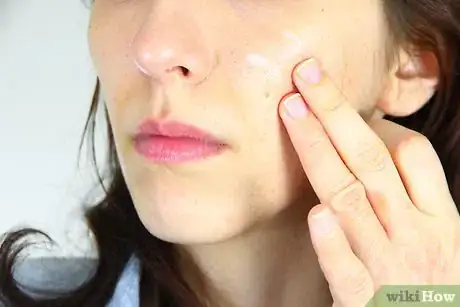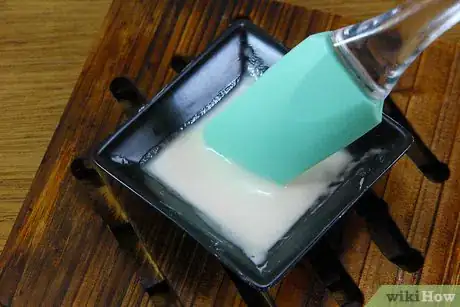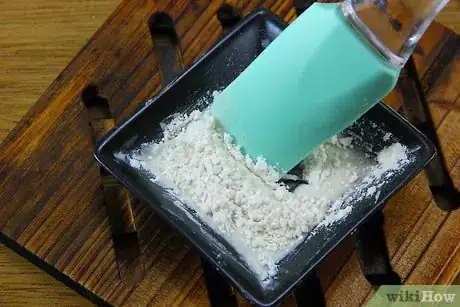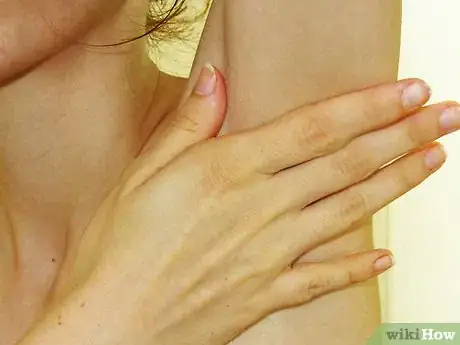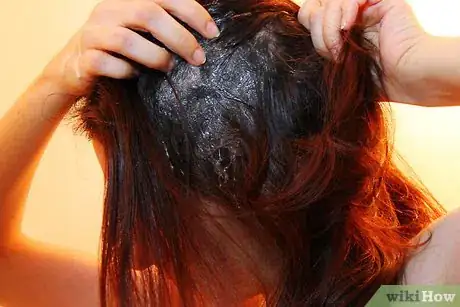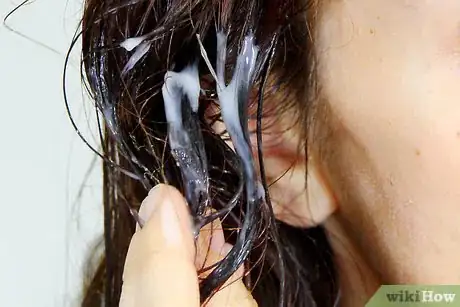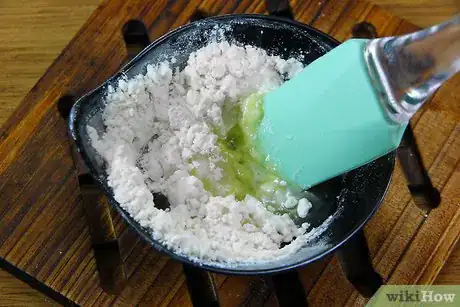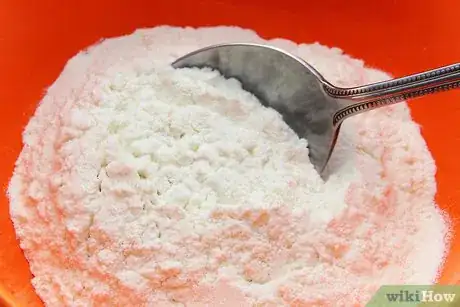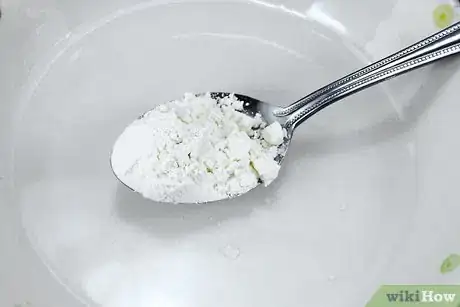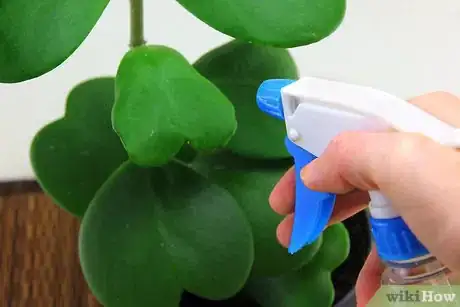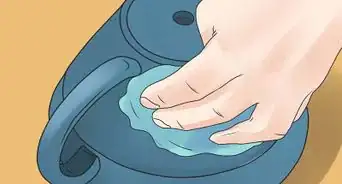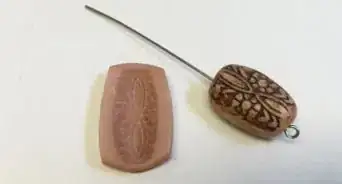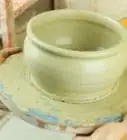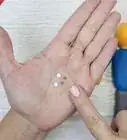This article was co-authored by wikiHow Staff. Our trained team of editors and researchers validate articles for accuracy and comprehensiveness. wikiHow's Content Management Team carefully monitors the work from our editorial staff to ensure that each article is backed by trusted research and meets our high quality standards.
There are 12 references cited in this article, which can be found at the bottom of the page.
This article has been viewed 49,550 times.
Learn more...
Kaolin is a naturally occurring clay found all over the world. It is typically packaged by color, and includes white, red, yellow, and pink varieties. All of them can be used interchangeably, but white kaolin is the most widely available. While the medical benefits of Kaolin are still being researched, many people swear by it, especially for topical use. Kaolin is incredibly adaptable and can be used on the skin, in the hair, and as a home remedy to treat problems including indigestion and diaper rash. Additionally, kaolin can be used in place of bentonite in almost any DIY hair or skincare recipe as a more mild, nourishing alternative. It’s especially great for those with sensitive or oily skin.
Steps
Applying Kaolin Clay on your Skin
-
1Use it as a facial cleanser. Kaolin can make a soothing, gently exfoliating facial cleanser. It is even mild enough to be used daily. To wash your face with kaolin, gently wet your skin with warm water. Massage a pinch of clay into your skin, letting it stand for about a minute. Then, wash your face with clean, warm water and continue with your daily toning and moisturizing routine.
-
2Make an acne treatment mask. Kaolin clay is great for absorbing oils and treating whiteheads. There are a number of ways you can make a Kaolin clay mask. The easiest way is to simply mix the clay with enough water to get it to a thin paste consistency. Leave it on until it dries, about 10 to 15 minutes, then rinse it off. You could also make a more healing clay mask by adding other ingredients.[1]
- Use two teaspoons of clay, two teaspoons of aloe vera, and a couple drops of tea tree oil to make a potent acne mask or a mask to treat oily skin.[2]
- Mix three tablespoons of clay, two tablespoons each of lavender and chamomile, and a quarter of a cup of colloidal oatmeal to make a mask for treatments on sensitive skin.[3]
Advertisement -
3Make a facial scrub. Washing your face with kaolin will provide very mild exfoliation. Adding kaolin to a facial scrub will help balance gentle and intense exfoliation. Add two to three tablespoons of clay to a quarter of a cup of white sugar and approximately three tablespoons of melted coconut oil to make a simple scrub that is gentle on your skin.[4]
- Add the oil a little bit at a time until the scrub is a thick paste. It may take a little less or a little more than the recommended amount depending upon your sugar and clay.
- Store your excess scrub in a sealed container in the fridge for up to three months.
-
4Take a kaolin bath. Adding a little kaolin clay to your bath can help soften dry skin. Draw yourself a hot bath and add a quarter to half a cup of kaolin clay, mixing gently with your hand or a large spoon to ensure it dissolves fully. Mix well, or you could end up with clumps of clay in your drain or in your pipes.[5]
- To make your bath extra indulgent, add a few drops of your favorite essential oil for an aromatic experience. Lavender is great for relaxing, while some find that citrus oils can be healing for dry or discolored skin.
-
5Dust under your armpits to control odor. Kaolin clay is absorbent and odor fighting. Dust a small amount under your armpits when you feel sweaty or notice a bit of an odor. It won’t replace your deodorant, but it can help control your sweat and body odor throughout the day.[6]
Making Kaolin Clay Treatments for Your Hair
-
1Use it as a dry shampoo. Kaolin clay is just as good at absorbing oils on the scalp as it is as soaking up oils on your face. Use a fluffy powder brush to dust a small amount of clay on your scalp, focusing on your part.[7]
- To make the most of your dry shampoo, apply it before your hair gets oily or greasy. That way the clay can absorb sweat and sebum as it develops.
- Try to only apply the clay once between showers. Adding too much clay could result in a cakey look or clumps in your hair.
-
2Make a scalp nourishing mask. A kaolin clay mask is great for oily hair and is thought to help promote hair growth. Mix two to three tablespoons of kaolin clay with enough water to create a runny paste. You may also choose to add fresh peppermint or rosemary or use the same scent essential oils to further stimulate your scalp.[8]
- Apply the mask at your roots and smooth down toward the tips of your hair. Allow it to stay in your hair for about ten minutes before rinsing in clean water.
- Use the mask one to two times a week to stimulate your scalp and refresh your hair.
-
3Turn kaolin into a hair wash. Instead of doing a weekly mask with kaolin, you can use it as a daily rinse. Mix a wash by adding warm water to one to three tablespoons of kaolin, depending upon your hair length. The mixture should make a runny paste. Apply to your hair and let stand for one to two minutes before rinsing it out in clean, warm water.[9]
- Use a strong brew of your favorite herbs or tea instead of water to add some stimulating properties and antioxidants to your rinse.
Making Kaolin Clay Home Remedies
-
1Add kaolin to diaper cream to treat rashes. Clays such as kaolin and bentonite are a natural remedy to clear up diaper rash.[10] Add a pinch of clay to diaper cream and mix in your hands before applying on your baby. Be sure to check with your pediatrician first, though.[11]
- Alternatively, if your baby has a persistent problem spot, you can make a poultice out of kaolin and water and apply directly to the affected area.
-
2Use as a treatment for diarrhea. While not tasty, kaolin has long been a natural remedy for diarrhea.[12] Take 26.2 g orally after you have a loose movement, and continue taking every six hours until your stool firms up. Avoid taking more than 262 g per day and don’t use kaolin for more than two days in a row.[13]
- Always consult with your doctor before trying any natural remedy. If you experience discomfort or if the clay makes the situation worse, discontinue using it immediately.
-
3Make a poultice to treat minor wounds. Mix two tablespoons of kaolin with water that has been boiled and allowed to cool. Add water slowly until the mixture forms a thick paste. Clean the affected area with isopropyl alcohol or soap and hot water, then apply a thick layer to minor scratches, insect bites, and itchy areas.[14]
- Allow the poultice to dry completely before removing it, and reapply as necessary.
-
4Make a spray to eliminate fruit flies. If you have house plants including herbs, fruits, and vegetables, they could attract fruit flies as they ripen. Add two heaping tablespoons to a 12 oz (354 ml) spray bottle of hot water and shake until the clay is completely dissolved. Then, spray a thin layer of the mixture over your plants. Repeat one to two times a month to keep the flies away.[15]
- Kaolin is generally safe to ingest, but not particularly tasty. Rinse any edible plants treated with kaolin before consuming.
References
- ↑ http://durablehealth.net/kaolin-clay/kaolin-clay-mask-benefits-face-acne-oily-skin-recipe/
- ↑ http://beautymunsta.com/beauty-benefits-of-kaolin-clay/
- ↑ http://durablehealth.net/kaolin-clay/kaolin-clay-mask-benefits-face-acne-oily-skin-recipe/
- ↑ http://homemadeforelle.com/10-simple-exfoliating-face-scrubs/
- ↑ http://www.wildturmeric.net/2015/03/top-5-uses-benefits-of-kaolin-china-clay-for-skin-health-hair.html
- ↑ http://beautymunsta.com/beauty-benefits-of-kaolin-clay/
- ↑ http://simplelifemom.com/2014/09/22/6-homemade-dry-shampoo-recipes/
- ↑ http://healthynews24.com/benefits-of-using-kaolin-clay/
- ↑ http://blackgirllonghair.com/2013/09/3-popular-and-affordable-clays-for-natural-hair/
- ↑ http://www.mayoclinic.org/diseases-conditions/diaper-rash/basics/alternative-medicine/con-20019220
- ↑ http://naturalparentsnetwork.com/mamas-natural-medicine-cabinet/
- ↑ https://www.ncbi.nlm.nih.gov/pmc/articles/PMC2904249/
- ↑ https://www.drugs.com/npp/kaolin.html
- ↑ http://www.wildturmeric.net/2015/03/top-5-uses-benefits-of-kaolin-china-clay-for-skin-health-hair.html
- ↑ http://www.naturalalternativeremedy.com/get-rid-fruit-flies-home-remedies/
About This Article
Kaolin is a naturally occurring clay that you can use in a variety of ways to treat your skin and hair. Kaolin clay makes a great exfoliating facial cleanser. All you need to do is wet your face, massage a pinch of clay into your skin, let it sit for 1 minute, then rinse it off. To make a face mask, just mix the clay with enough water to make a thin paste, then apply it to your face, leave it for 10 to 15 minutes, and rinse it off. You can also use the same paste as a hair mask. Apply it to your roots and work it through your hair to your tips. Leave the hair mask to sit for 10 minutes, then rinse it out. Alternatively, use your kaolin clay as dry shampoo. Just use a powder brush to dust a small amount of the clay onto your scalp so it can absorb excess oil. For more tips, including how to treat rashes with kaolin clay, read on!
